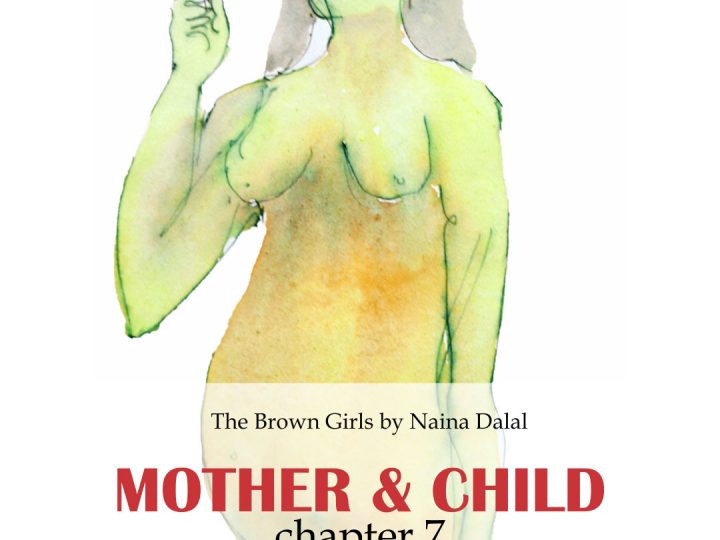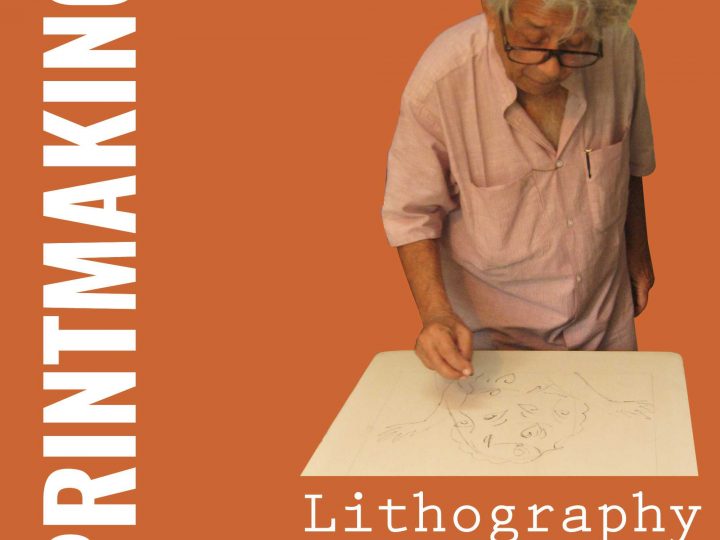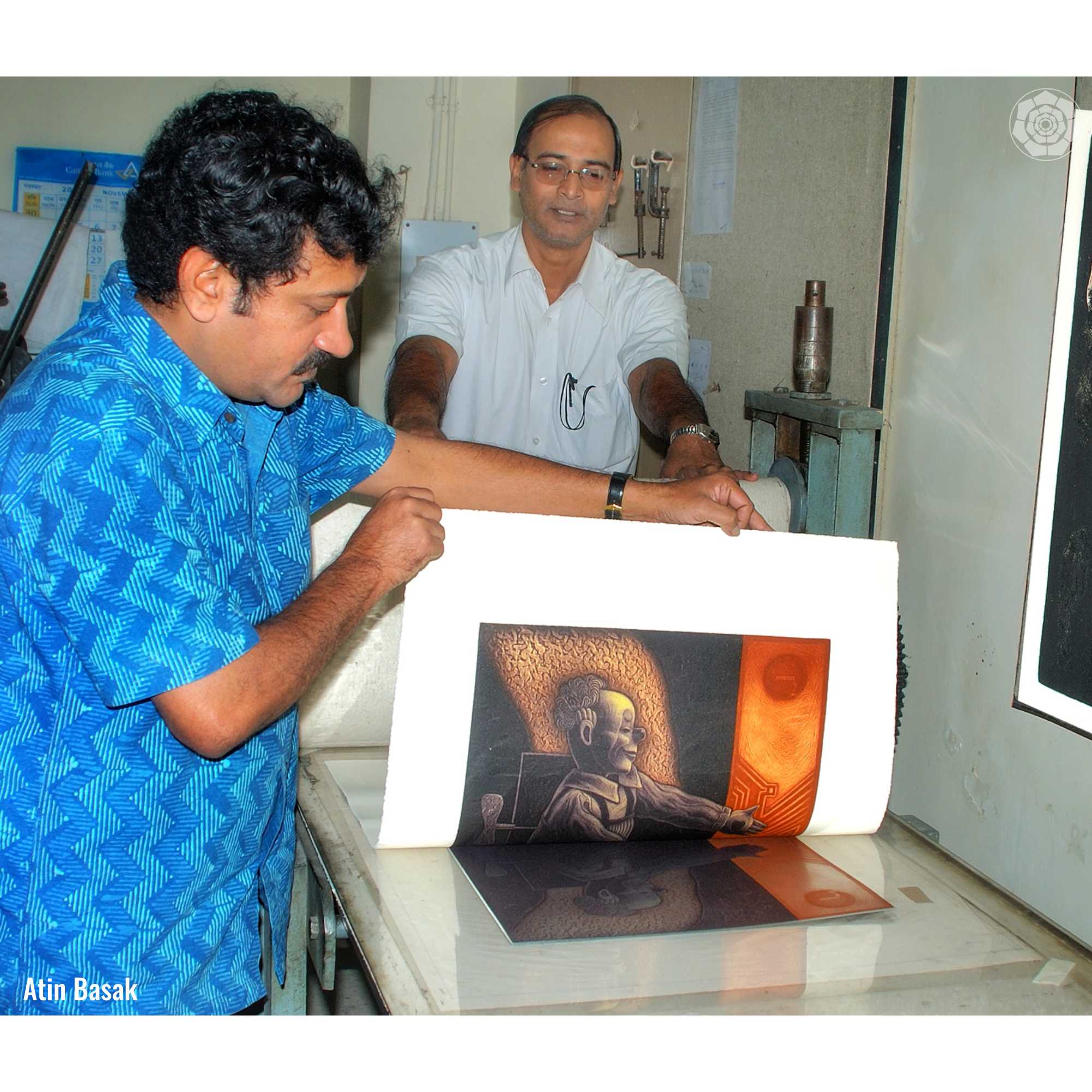
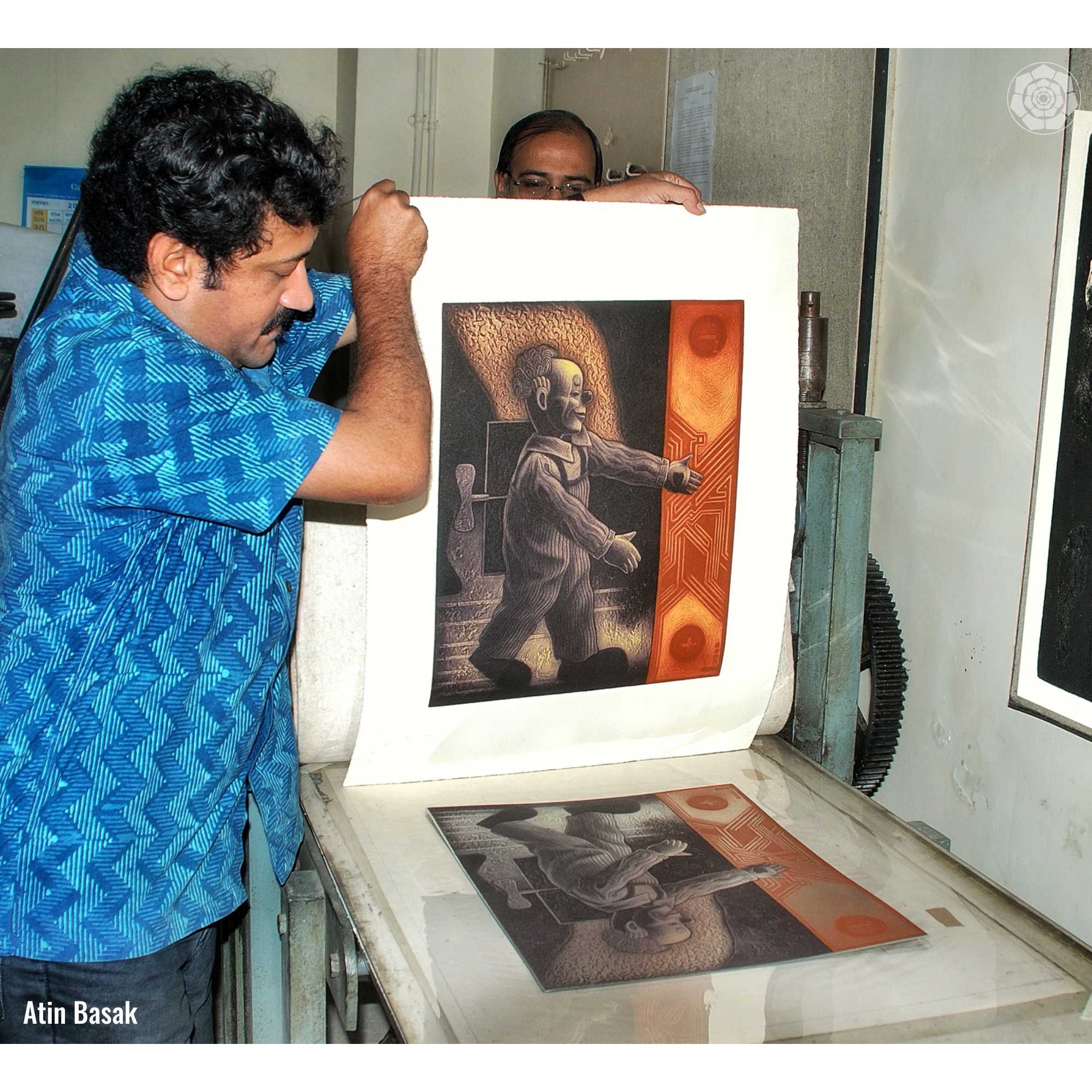
A print is an impression of an image from one surface transferred on another surface.
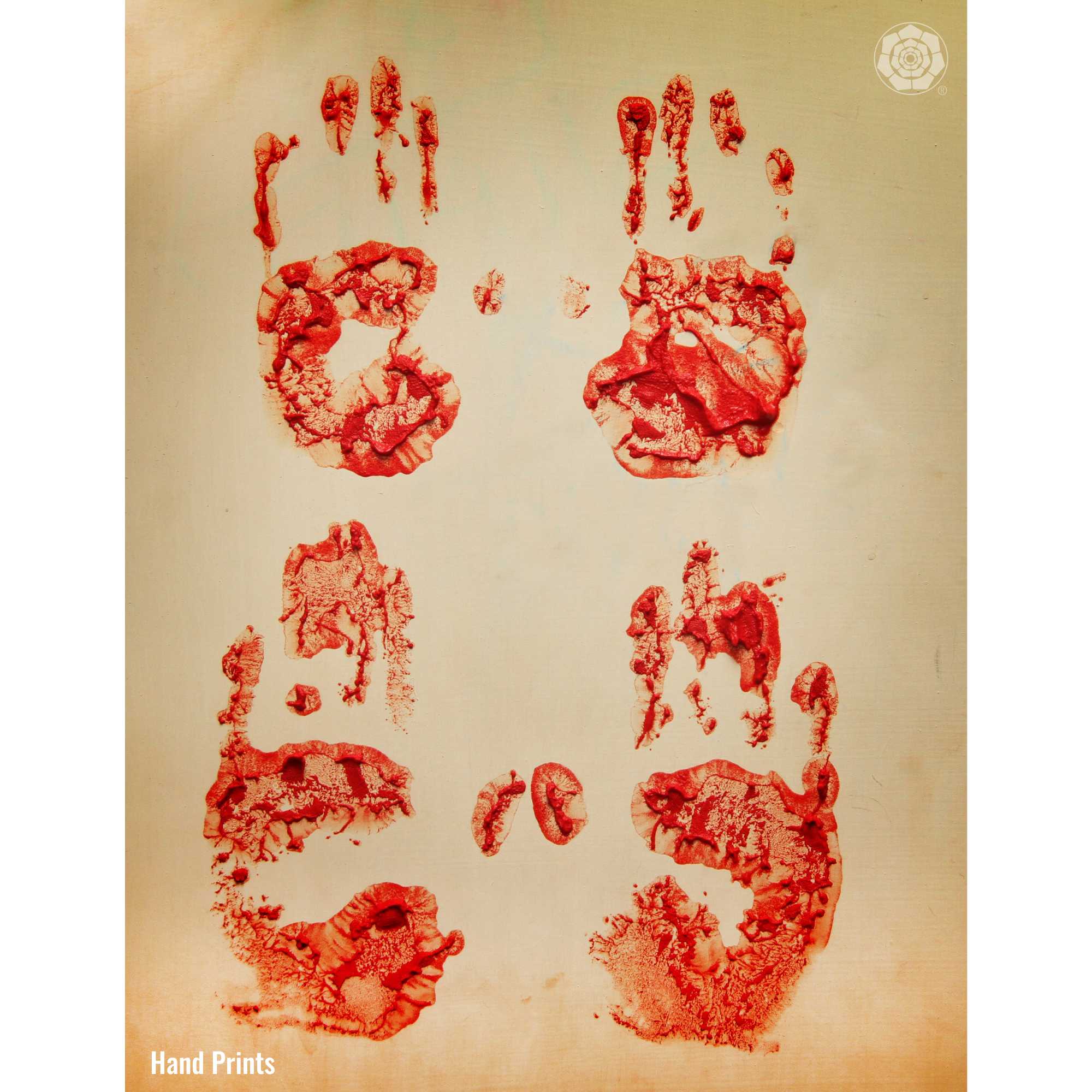
A thumbprint on paper and a footprint on soft ground are its two very common forms. Printed images of hand palms on the walls of ancient caves are perhaps the oldest prints found.
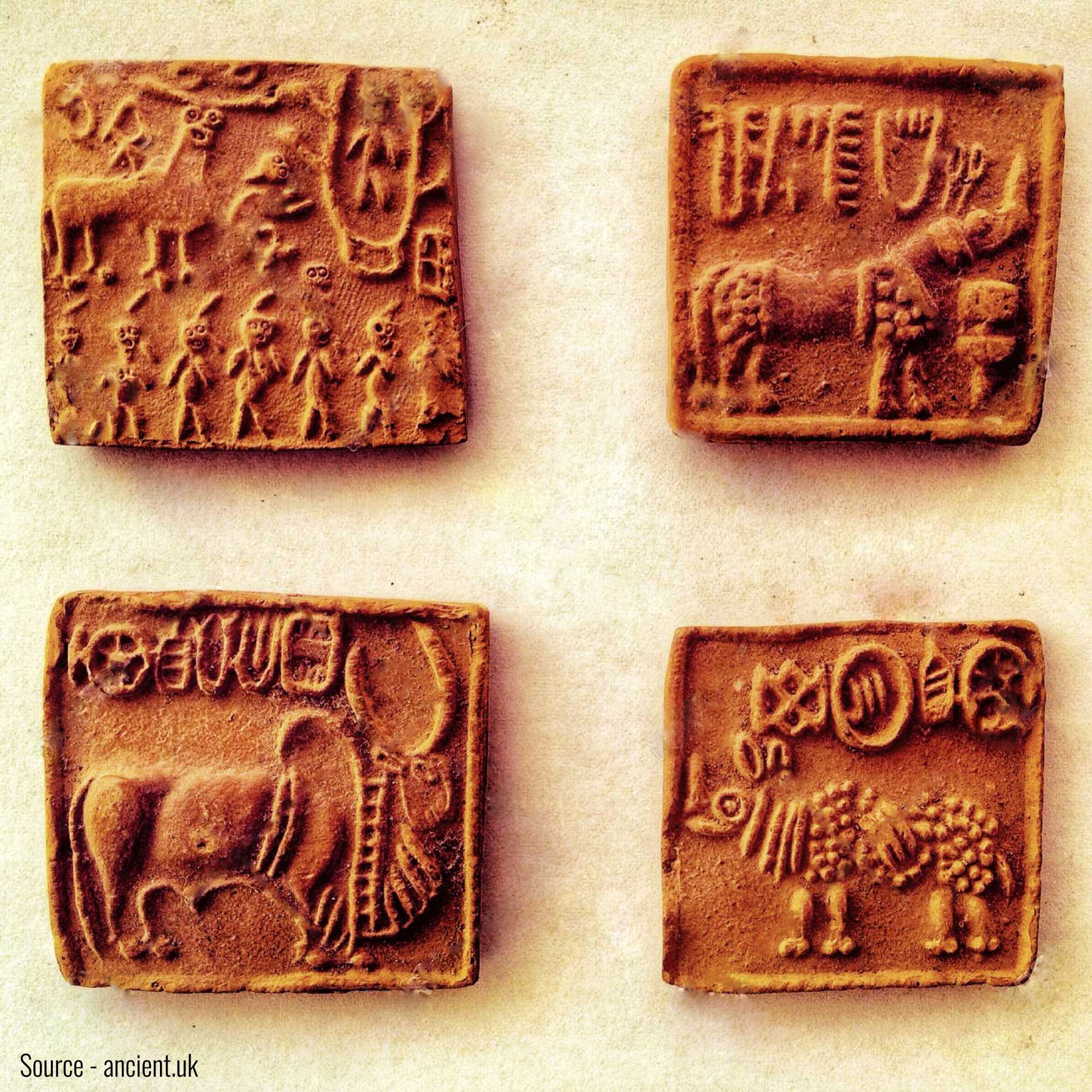
Harappan Civilization
Embossed relief images on terracotta – fired clay tablets—from Harappan period can also be considered prints.
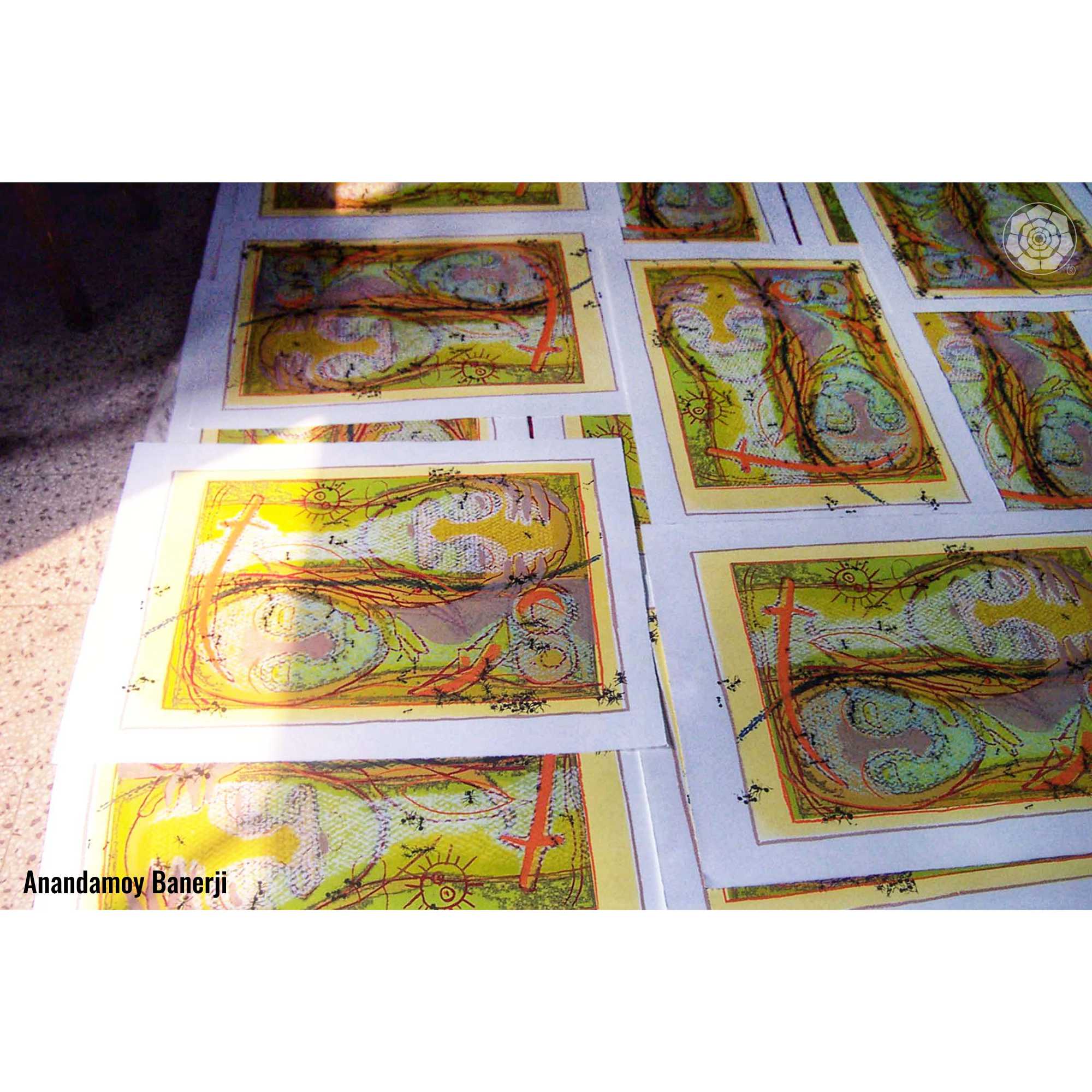
Patterns on textile printed with decorative motifs carved on wood blocks are some of the more common form of prints known to us. However it was only after the invention of paper, people started making prints of visual images and written data on a large scale. This enabled them to make a substantial number of almost identical copies of the original image, which can then be availed by many people at once.

Images Engraved on Metal Plates
This practical device was improvised and perfected from simple wood blocks to fine engravings. More methods and techniques were also invented and developed such as Stencils, Intaglio and Lithography. Prints made from the images engraved on thin metal plates by highly skilled craftsmen from the famous works of master painters were very popular form of reproductions available in Europe.
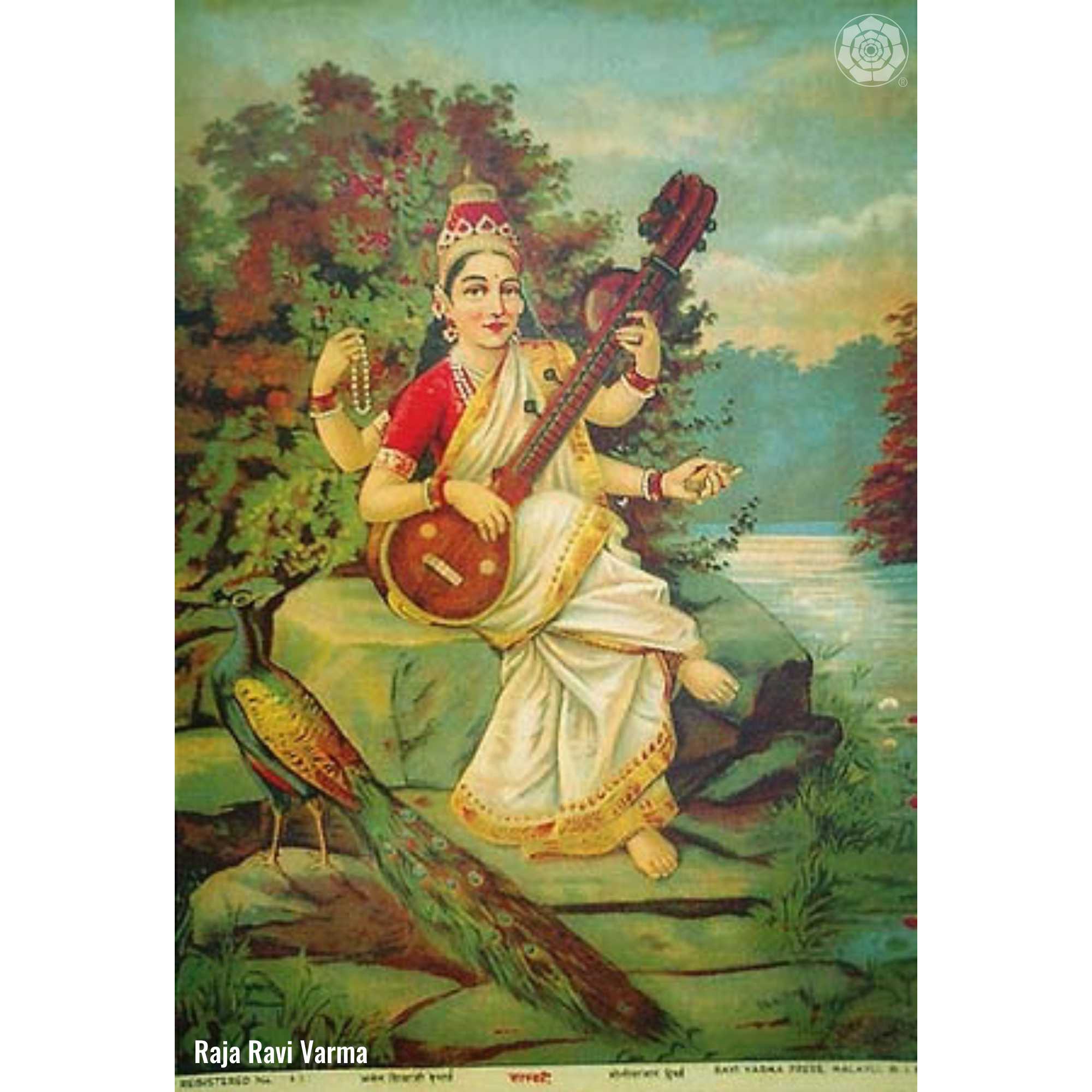
Raja Ravi Verma
In India, Raja Ravi Varma had made large number of copies of several of his own paintings by Lithographic process. His and many similar Oleographs have found place on the walls of almost all houses during the pre-independence era in India.
Invention of photography has been a very strong force that changed our life in many ways. It especially affected visual arts in a big way. Most of the then popular methods used for making reproductions became obsolete and this artistic craft, which was done earlier by creative individuals on a small-scale level slowly, got developed into large and high-tech industries. The printing methods used now for most of the reproductions at industrial level make some use of photography. Such methods are referred as ‘Photo Mechanical’.
It has become possible to make thousands or even a larger number of copies within a very short time. When compared to a hand made print, the cost for such a mass produced reproduction is understandably far less. These asides, such reproductions do not have any easily noticeable characteristics of their own. The main intention and purpose of making them is to make a large number of copies that appear very close to the original image within certain constraints such as, size and whether they are monochrome or multicolored reproductions, whereas the earlier manual printing processes have very distinct attributes.
They are quite different from each other. In spite of the proliferation of photomechanical processes, artists have preferred the manual methods of printmaking for their personal visual expressions. Although, there are some similarities in the process of making a drawing and such prints, there is a vast difference between methods and implements used for creating images and their final appearance.
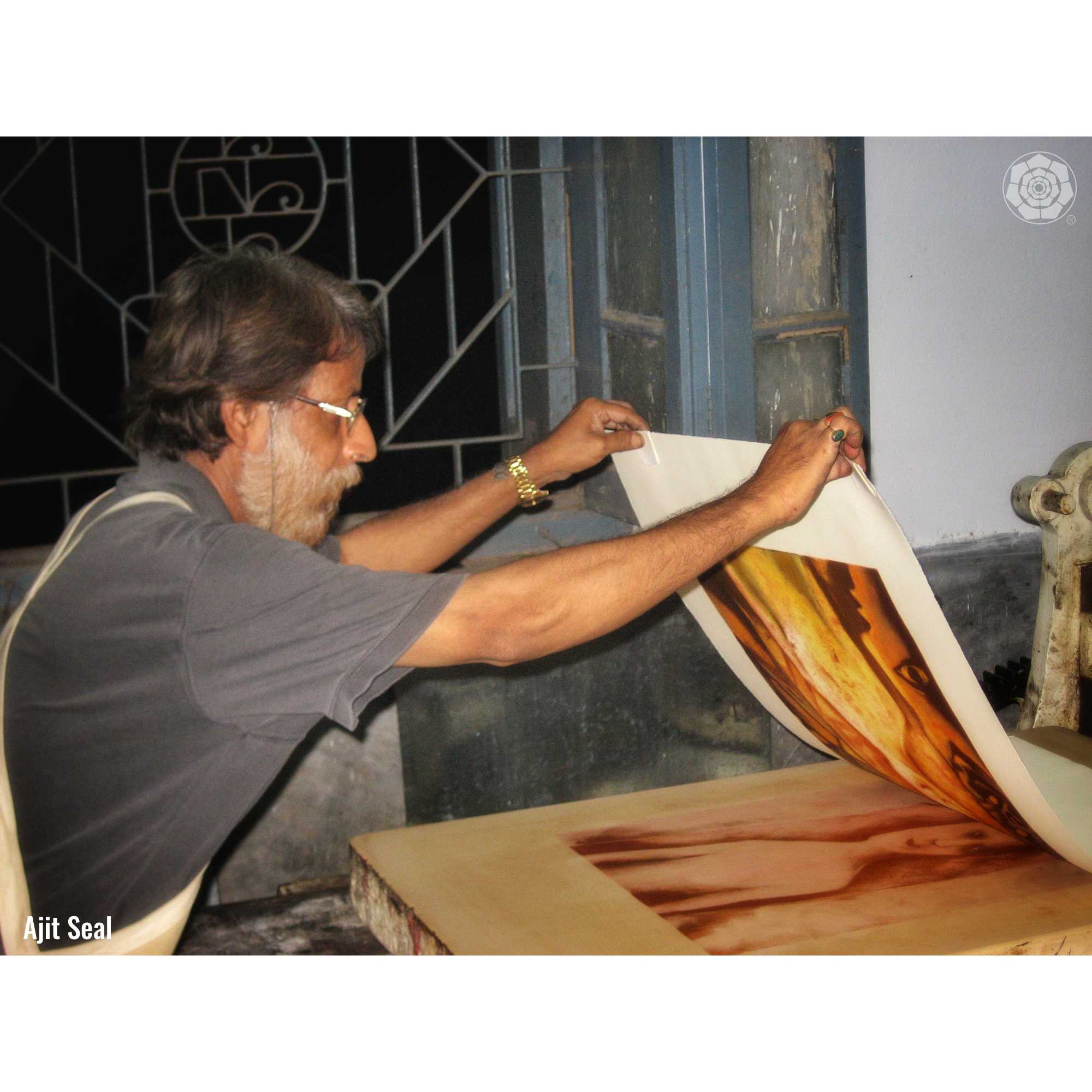
Usually on Paper
Thus PRINTMAKING can be defined as: the art of creating visible expressions or forms, employing the processes of printing.
K.G. Subramanyan, Jeram Patel, Akbar Padmsee, J.Swaminathan, Bhupen Kakhar, G. M. Sheikh are among some of the famous Indian painters who on and off have made excellent prints in various mediums but, are not labeled as printmakers. On the contrary, several artists are known as printmakers because initially they had pursued this medium but, are now doing paintings also.
Making a print requires that initially an image is made on a piece of wood, metal sheet, screen etc. (referred in this note as matrix and matrices) which is then transferred or impressed on another surface- usually on paper.

Chippa Sudhakar
Most artists make a small ‘EDITION’ – a number of impressions from the same matrix- by repeating the printing process, so that more people can have the pleasure of owning it. Each print of such edition is specified with its number and size of the edition. 1/30 would mean that this print is No. 1 from the edition containing 30 prints.
These and also the title, year of creation and artist’s signature are written with a pencil near the bottom edge of the image. Such an impression is considered ORIGINAL PRINT. This is not only because the artists them selves create the initial images and, are also actively involved in most – if not all — of the technical processes but, mainly because such prints are not the reproductions of any other, previously existing paintings or drawings.
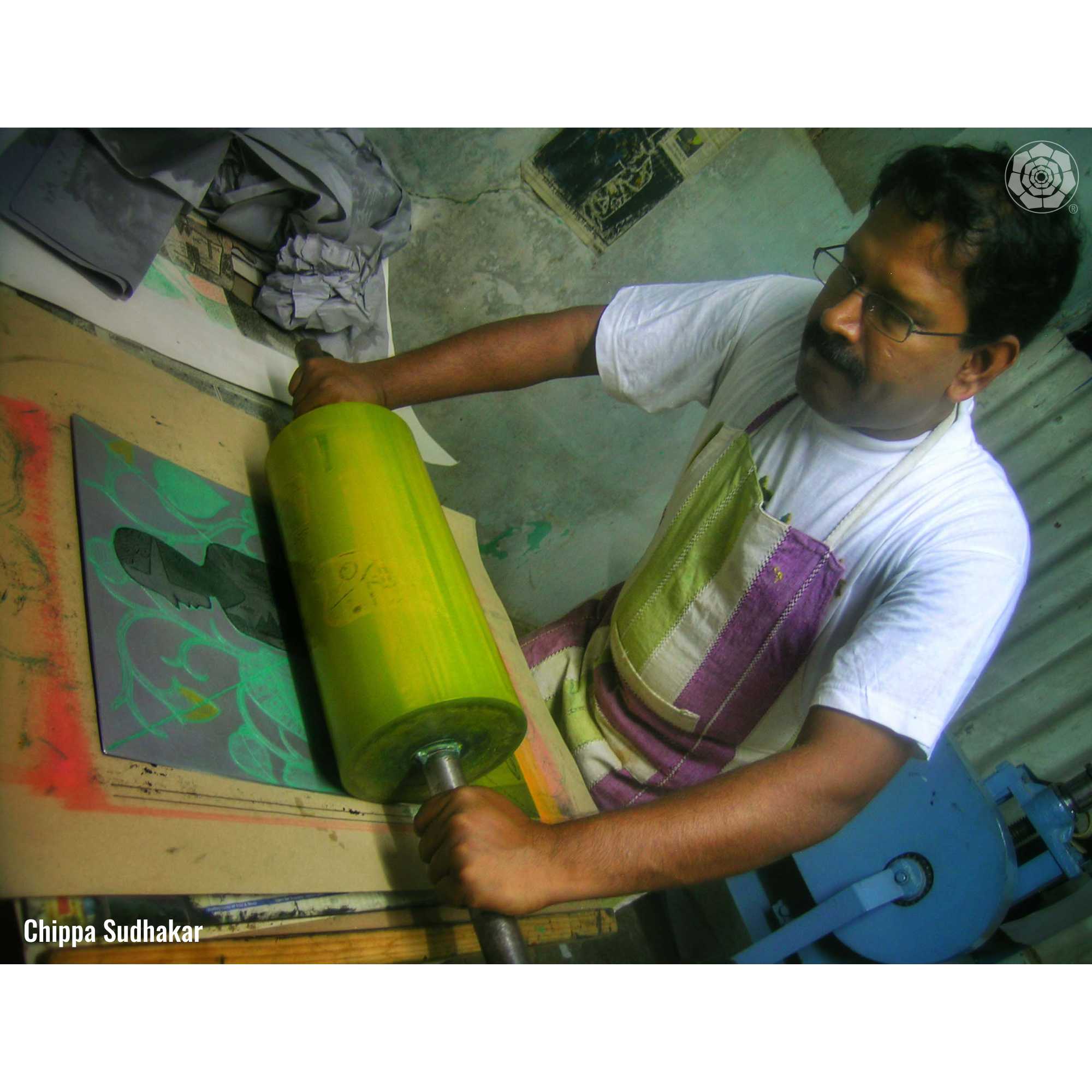
A printmaker is not compelled to make a reproduction of any other image but has a full autonomy to create the image according to his or her desire through print related processes. One can keep on working till the final stage of printing. The image can be improvised by adding, removing or changing the tones, textures and details on the matrix, and then also by modifying the colours, transparency, opacity and viscosity of inks during the printing process.
Numerous permutations of all these are done till the artist is satisfied with the end result –the print. This is a fairly accurate description of the manner in which artist-printmakers normally work. Artist printmakers generally employ the following four basic methods –either separately or in combined forms. Though most of them can use all mediums, they prefer to work with one or two and stick to that.
Disclaimer
In this blog, I have tried to share my personal experiences and knowledge gained over the years talking to and understanding artists, collectors, buyers, students and most importantly people who don’t have much interest in art and the watercolour medium. All of them have given me a different perspective in understanding this wonderful medium. It can be a quick guide for a students, novice collector or buyer who wants to start collecting watercolour artworks.


